Archimedes From Syracuse – Master Of Science Whose Legacy Still Remains Powerful
A. Sutherland - AncientPages.com - He has been considered a genius with the highest mental ability and unique talent. Who was Archimedes?
 Statue of Archimedes of bronze created by Gerhard Thieme (1972) . Image credit: Spree Tom - CC BY-SA 3.0
Statue of Archimedes of bronze created by Gerhard Thieme (1972) . Image credit: Spree Tom - CC BY-SA 3.0
Archimedes was a great scholar from Syracuse, the ancient capital of Sicily, which was originally a Greek colony founded by Corinth in 734 BC.
Not much is known about Archimedes, and information about him comes only from the introduction of his works and from numerous anecdotes often quoted by ancient historians.
He was the son of Fidias, an unknown astronomer about whom nothing is known. Even the year of Archimedes' birth (probably about 287 BC) has never been established with absolute certainty.
Plutarch reports that Archimedes' family was in some way related to that of Hieron II, King of Syracuse (c. 306 BC - 216/215 BC), the Greek Sicilian Tyrant of Syracuse.
It is believed that he was killed in 212 BC during the Roman conquest of Syracuse.
It was Hieron who asked the scholar to check - whether the goldsmith performing the crown for the tyrant did not replace the gold with… silver.
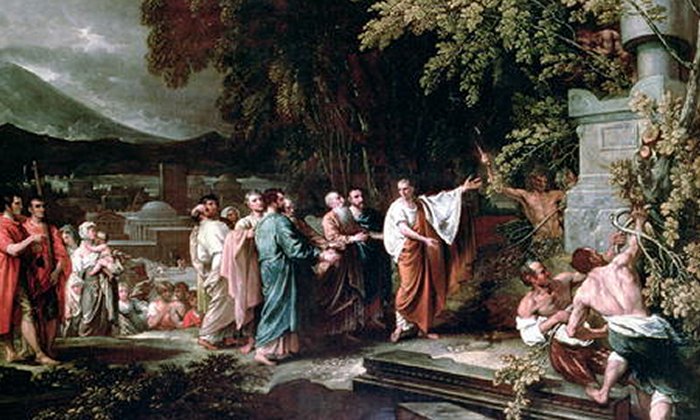 Cicero and the magistrates discovering the tomb of Archimedes in Syracuse , by Benjamin West (1797). Image credit: Benjamin West -Bridgeman Art Library - Public domain
Cicero and the magistrates discovering the tomb of Archimedes in Syracuse , by Benjamin West (1797). Image credit: Benjamin West -Bridgeman Art Library - Public domain
In an experiment about floating and sinking, known today as "Archimedes' principle", the Greek mathematician and philosopher Archimedes quickly found out (maybe by chance or perhaps not) that "when an object is immersed in a liquid, the upthrust (a force that a liquid or gas exerts on a body floating in it) - is equal to the weight of the liquid displaced by the object."
The sage discovered the hydrostatic law of buoyancy while bathing and playing with a rubber duck and a plastic boat. He ran out into the streets of Syracuse, screaming, "Eureka!" which means "I found." He probably did not even notice that he was naked, and on his way to the ruler, he informed him that he was, in fact – deceived.
Archimedes of Syracuse. Image credit: Domenico Fetti - Public Domain
Thus, the great man became known to the city's inhabitants not only as a brilliant scholar but also as an exhibitionist.
His intellectual potential was also attested during the Syracuse war with the Romans when he prepared the defense of his hometown. He built many gigantic war machines with catapults at the head, not only feared by the land forces but also by the maritime forces of Rome. He also created powerful "iron hands" cranes that captured Roman ships and overturned them. The Syracuse warriors drowned many gigantic boulders, thrown off by the arched arms constructed by Archimedes.
However, his most intriguing invention was the famous Burning Mirrors, by which Syracuse set fire to Roman ships. It was a remarkable design of the master and is dated to about 2200 years.
In this way, Syracuse could hold out for three years against an extended Roman siege.
His famous Syracusean planetarium enabled him to observe the motion of all celestial objects, visible from the motion of the planets to the eclipses of the Moon and Sun. Archimedes first invented methods for determining solids' fields, volume and surface and contributed to knowledge regarding at least three of the five simple machines such as winch, pulley, lever, wedge, and screw—known to antiquity.
At the end of 212 BC, his city of Syracuse finally died. During the robbery of the city by the Romans, the great Archimedes was murdered by one of the Roman legionaries.
Plutarch himself cited different versions of his death. One of them seems most likely; Archimedes was killed by a Roman soldier, no doubt as retribution when Rome took Syracuse.
It does not matter which version is genuine. The fact is that he was murdered with the fall of the city of Syracuse. Apparently, on this great man's gravestone, a cylinder drawing was carved, describing on a ball with the signature that the volume ratio of these bodies was 3: 2.
Thus, Archimedes wanted to capture his most outstanding achievement, as he wrote in his last will.
Where is the grave of this remarkable ancient scientist? According to legend, Archimedes is buried at the Necropolis Grotticelli, an ancient burial road in the Archaeological Park of Syracuse. Other locations were also suggested, and its real location is unknown.
The last mention of him comes from the records of Cicero, who was to visit Archimedes' resting place. Later the grave was certainly forgotten and left unattended.
Thus, after Archimedes, only the achievements of his mind remained to this very day.
Updated on February 4, 2023
Written by – A. Sutherland AncientPages.com Staff Writer
Copyright © AncientPages.com All rights reserved. This material may not be published, broadcast, rewritten or redistributed in whole or part without the express written permission of AncientPages.com
Expand for referencesReferences:
Lafferty, P. Archimedes
Paipetis, S. A., Ceccarelli, M., The Genius of Archimedes
More From Ancient Pages
-
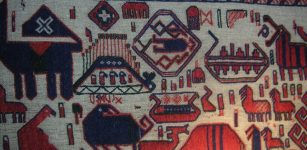 Överhogdal Tapestry: Amazingly Well-Preserved Ancient Textiles With Norse And Christian Motifs
Artifacts | Apr 26, 2019
Överhogdal Tapestry: Amazingly Well-Preserved Ancient Textiles With Norse And Christian Motifs
Artifacts | Apr 26, 2019 -
 Unknown Inscription Accidentally Found In South Tower Of 13th Century Cēsis Castle In Latvia
Archaeology | Aug 18, 2020
Unknown Inscription Accidentally Found In South Tower Of 13th Century Cēsis Castle In Latvia
Archaeology | Aug 18, 2020 -
 Legacy Of Queen Hatshepsut’s Temple In Luxor – New Valuable Finds Announced
Archaeology | Jan 9, 2025
Legacy Of Queen Hatshepsut’s Temple In Luxor – New Valuable Finds Announced
Archaeology | Jan 9, 2025 -
 Sole Survivor Recalls An Incredible Unexplained Mountain Mystery
Featured Stories | Aug 7, 2023
Sole Survivor Recalls An Incredible Unexplained Mountain Mystery
Featured Stories | Aug 7, 2023 -
 Bizarre Sound Of A Crash Remains An Unexplained Mystery
Featured Stories | Oct 22, 2020
Bizarre Sound Of A Crash Remains An Unexplained Mystery
Featured Stories | Oct 22, 2020 -
![Photo taken on Dec 20, 2015 shows hoof-shaped gold ware unearthed from the main coffin in the Haihunhou (Marquis of Haihun) cemetery, East China's Jiangxi province. [Photo/Xinhua]](https://www.ancientpages.com/wp-content/uploads/2015/12/MarquisofHaihuntomb1-307x150.jpg) Does A 2,000-Year-Old Tomb Belong To Marquis of Haihun? – Search For His Seal Continues
Archaeology | Dec 25, 2015
Does A 2,000-Year-Old Tomb Belong To Marquis of Haihun? – Search For His Seal Continues
Archaeology | Dec 25, 2015 -
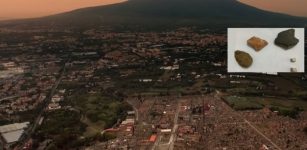 Stolen Artifacts Returned To Pompeii – Believed To Be Cursed -They Brought Misfortunes To A Woman And Her Family
Artifacts | Oct 13, 2020
Stolen Artifacts Returned To Pompeii – Believed To Be Cursed -They Brought Misfortunes To A Woman And Her Family
Artifacts | Oct 13, 2020 -
 On This Day In History: Henry IV Is Crowned King Of France – On Feb 27, 1595
News | Feb 27, 2017
On This Day In History: Henry IV Is Crowned King Of France – On Feb 27, 1595
News | Feb 27, 2017 -
 Blame The Neanderthals For Your Lower Back Pain – Scientists Say
Archaeology | Mar 8, 2022
Blame The Neanderthals For Your Lower Back Pain – Scientists Say
Archaeology | Mar 8, 2022 -
 How The Horseshoe Became A Symbol Of Good Luck
Ancient Idioms & Superstitions | Jan 28, 2017
How The Horseshoe Became A Symbol Of Good Luck
Ancient Idioms & Superstitions | Jan 28, 2017 -
 Aqrabuamelu – Mysterious Scorpion Men In Babylonian Mythology
Featured Stories | Jan 19, 2016
Aqrabuamelu – Mysterious Scorpion Men In Babylonian Mythology
Featured Stories | Jan 19, 2016 -
 Unexpected Neanderthal Behavior In Spain’s Southern Pyrenees – Revealed
Archaeology | Aug 14, 2024
Unexpected Neanderthal Behavior In Spain’s Southern Pyrenees – Revealed
Archaeology | Aug 14, 2024 -
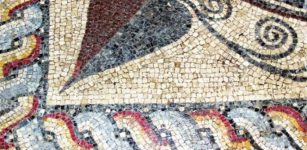 1,800-Year-Old Villa Of Famous Ancient Fisherman Phainos Unearthed In Turkey
Archaeology | Jun 20, 2018
1,800-Year-Old Villa Of Famous Ancient Fisherman Phainos Unearthed In Turkey
Archaeology | Jun 20, 2018 -
 Bizarre Story Of Scottish Penkaet Castle
Featured Stories | Apr 18, 2020
Bizarre Story Of Scottish Penkaet Castle
Featured Stories | Apr 18, 2020 -
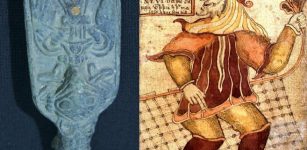 Rare Discovery Of Ancient Artifact Depicting Norse God Loki In Denmark Remains A Mystery
Archaeology | Jan 4, 2017
Rare Discovery Of Ancient Artifact Depicting Norse God Loki In Denmark Remains A Mystery
Archaeology | Jan 4, 2017 -
 Who Deceived Mighty Yuku God Of Rain And Thunder In Beliefs Of Yaquis Of Southern Arizona And Sonora, Mexico?
Native American Mythology | Dec 21, 2023
Who Deceived Mighty Yuku God Of Rain And Thunder In Beliefs Of Yaquis Of Southern Arizona And Sonora, Mexico?
Native American Mythology | Dec 21, 2023 -
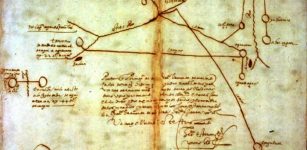 Etzanoa: Long-Lost Native American City Discovered In Kansas After 400 Years
Archaeology | Apr 24, 2017
Etzanoa: Long-Lost Native American City Discovered In Kansas After 400 Years
Archaeology | Apr 24, 2017 -
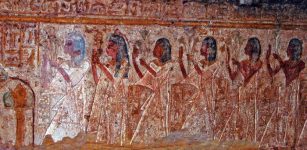 Rock-Cut Tomb Of Pennut, Viceroy Of Nubia Under Reign Of Ramses VI
Civilizations | Dec 7, 2018
Rock-Cut Tomb Of Pennut, Viceroy Of Nubia Under Reign Of Ramses VI
Civilizations | Dec 7, 2018 -
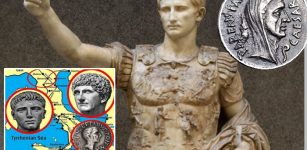 Triumvirates In Ancient Rome: Power Struggle, Intrigue And Ambush
Ancient History Facts | Apr 5, 2024
Triumvirates In Ancient Rome: Power Struggle, Intrigue And Ambush
Ancient History Facts | Apr 5, 2024 -
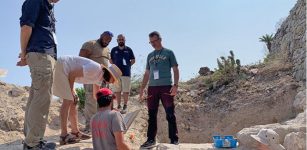 2,000-Year-Old Roman House Discovered In Malta
Archaeology | Jul 27, 2023
2,000-Year-Old Roman House Discovered In Malta
Archaeology | Jul 27, 2023


